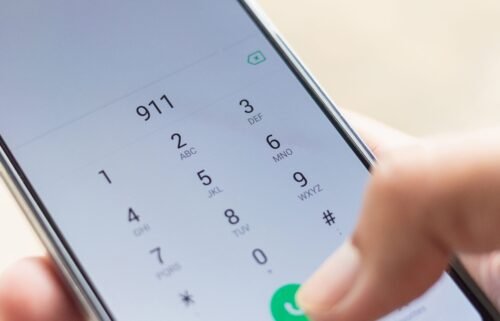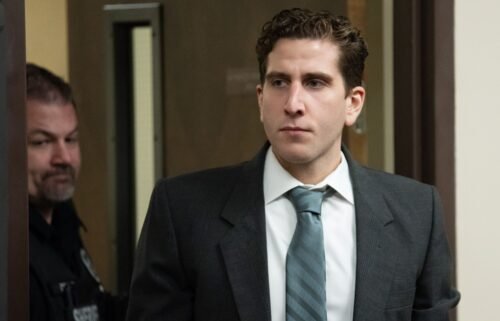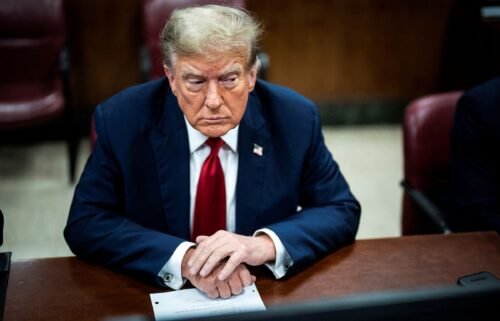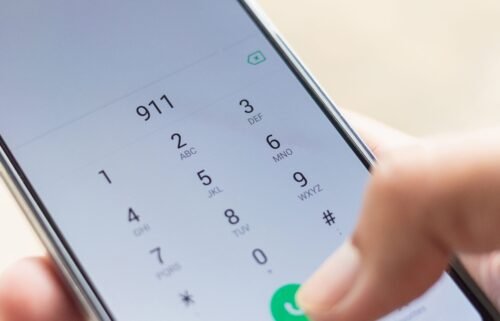George Floyd died of a low level of oxygen as Derek Chauvin pinned him to the street, doctor says
A renowned pulmonary critical care doctor testified Thursday morning that George Floyd died from a “low level of oxygen” when former police officer Derek Chauvin pinned him to the street and restricted his ability to breathe.
“This caused damage to his brain that we see, and it also caused a PEA arrhythmia that caused his heart to stop,” Dr. Martin Tobin of Chicago testified, referring to pulseless electrical activity, a type of cardiac arrest.
“The cause of the low level of oxygen was shallow breathing,” he added. “Small breaths. Small tidal volumes. Shallow breaths that weren’t able to carry the air through his lungs down to the essential areas of the lungs that get oxygen into the blood and get rid of the carbon dioxide.”
He identified four main reasons why Floyd died: the handcuffs and the street acting as a “vise,” Chauvin’s left knee on his neck, Floyd’s prone position and Chauvin’s right knee on Floyd’s back, arm and side. Combined, these limited Floyd’s ability to expand his lungs and narrowed his hypopharynx, a part of the throat that air passes through.
Floyd’s preexisting health conditions were not relevant to his death, Tobin said.
“A healthy person subjected to what Mr. Floyd was subjected to would have died,” he said.
The doctor highlighted several still images from the police body-cam footage that showed Floyd pressing his knuckles against the squad car’s tire, pressing his knuckles against the ground, lifting his right shoulder and even digging his face into the street. These images indicated that Floyd was using every possible way to try to lift up his chest and breathe, Tobin said.
“It’s a very poor way of breathing. But it’s what you have to do when everything else is failing,” he said.
Prosecutors also played disturbing slow-motion video of what Tobin said was Floyd’s final moment alive, as his eyes flickered and then closed.
“You can see his eyes, he’s conscious, and then you see that he isn’t. That’s the moment the life goes out of his body,” Tobin said.
With the demeanor of a kindly old professor, Tobin spoke directly to the jury and encouraged them to feel parts of their own neck and chest as he described how breathing works. Almost all of the jurors did as the doctor asked and closely engaged with the testimony, according to a pool report from inside the courtroom.
Tobin’s testimony comes on the ninth day of the trial as prosecutors shifted into the third phase of their case, focusing on the medical analysis of Floyd’s cause of death.
The first week of the trial focused on Floyd’s last moments on May 25, 2020, particularly the harrowing bystander and body-camera footage that showed his final breaths. Over the last few days, a series of police experts and training coordinators have testified that Chauvin violated police policy and used excessive force on Floyd.
The most important medical testimony could come Friday when Hennepin County Chief Medical Examiner Dr. Andrew Baker is expected to testify. Baker performed the autopsy on Floyd and determined his death was a homicide, listing the cause of death as “cardiopulmonary arrest complicating law enforcement subdual, restraint, and neck compression.”
The medical analysis is important to the prosecution’s case that Floyd died because Chauvin put his body weight on Floyd’s neck and back for over nine minutes — causing death by “positional asphyxia.” Chauvin’s defense attorney Eric Nelson has argued that Floyd died of a drug overdose and preexisting health conditions.
Prosecutors have sought to show Chauvin used excessive and unreasonable force on Floyd and had a “depraved mind” without regard for human life.
Chauvin, 45, has pleaded not guilty to second-degree murder, third-degree murder and third-degree manslaughter. The trial, now in its second full week of testimony, is expected to last about a month.
Fentanyl did not play a role in Floyd’s death, doctor says
Chauvin’s knee was on Floyd’s neck for over 90% of the time, Tobin said. The doctor calculated that this constituted about 91.5 pounds on Floyd’s neck when his feet came off the ground.
By observing Floyd’s condition in video and calculating the rate of decline in his blood-oxygen level, Tobin deduced that Floyd eventually had no oxygen left in his body. Chauvin remained kneeling on him for another three minutes and two seconds after that point, he said.
He highlighted a moment in the body-camera footage when Floyd’s legs lift into the air. This involuntary movement, also known as an anoxic seizure, is evidence of a fatal brain injury due to lack of oxygen, Tobin said.
Further, Tobin explained that fentanyl did not play a role in Floyd’s death. After observing body-cam footage, Tobin calculated Floyd’s respiratory rate at 22 breaths per minute, within normal range. People who overdose on fentanyl generally have a respiratory rate of about 10, so Tobin concluded that fentanyl was not affecting Floyd’s breathing.
“Basically it tells you that there isn’t fentanyl on board that is affecting his respiratory centers. It’s not having an effect on his respiratory centers,” Tobin said.
At the scene, former officer Tou Thao told the concerned bystanders that “if you can speak, you can breathe.” Tobin testified that comment is true but misleading and “gives you an enormous false sense of security.”
“Certainly, at the moment that you are speaking, you are breathing. But it doesn’t tell you that you’re going to be breathing five seconds later,” the doctor said.
Floyd’s suspected drug use
In Wednesday’s testimony, the special agent who led the Minnesota Bureau of Criminal Apprehension investigation into Floyd’s death struggled to make sense of a short phrase Floyd said as Chauvin kneeled on him.
Senior Special Agent James Reyerson was shown a clip from Minneapolis Police body-camera footage of Floyd saying something while handcuffed and in a prone position on the ground. He initially agreed with Chauvin’s defense attorney that it sounded like Floyd said, “I ate too many drugs.”
After a short break, the prosecution played for Reyerson a longer clip of the video. Reyerson then changed his mind. “I believe Mr. Floyd was saying, ‘I ain’t do no drugs,’ ” he said.
Earlier on Wednesday, a Los Angeles Police Department use-of-force expert hired by the prosecution testified that Chauvin had used excessive and deadly force on Floyd when none was needed.
Further, several white pills containing fentanyl and methamphetamine were found in Floyd’s vehicle, and a smaller pill with Floyd’s saliva on it was found in the back of the police squad car, three forensic scientists said Wednesday.
BCA investigator McKenzie Anderson searched the vehicles involved in May and then again months later after initially failing to collect some of the pills.
In Floyd’s vehicle, she found two packets of suboxone, a drug that treats opioid addiction, three white pills, and bills stuffed between the seat and the center console, she said.
Inside the police squad car, she initially recovered Floyd’s shoes and a strap and noted eight bloodstains that matched Floyd’s DNA. On her second search of the car, she recovered a pill with a rough texture that did not appear whole as well as several small pieces that she thought might be pill fragments. Tests confirmed the smaller pill had Floyd’s saliva on it, she testified.
Breahna Giles, a BCA forensic scientist, testified that she analyzed the white pills. They had the markings of a pill that would contain oxycodone and acetaminophen, but upon testing they actually contained methamphetamine and fentanyl, she said.
In addition, a glass pipe recovered from the vehicle contained THC, the psychoactive component of marijuana, but no plant material, Giles told the court.




